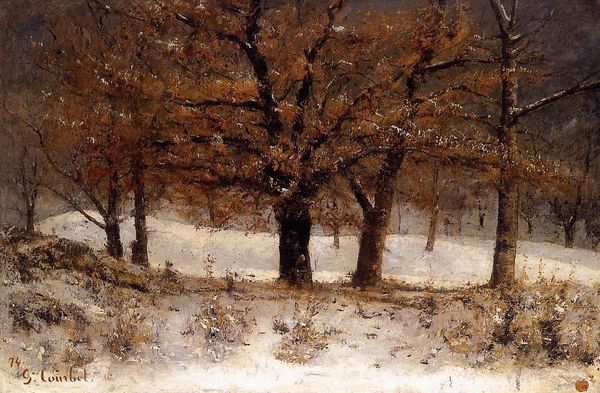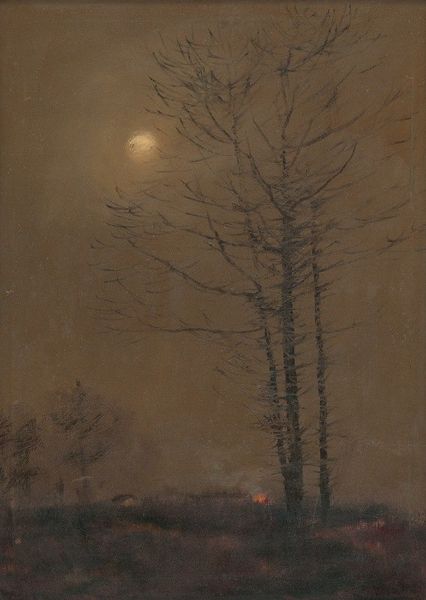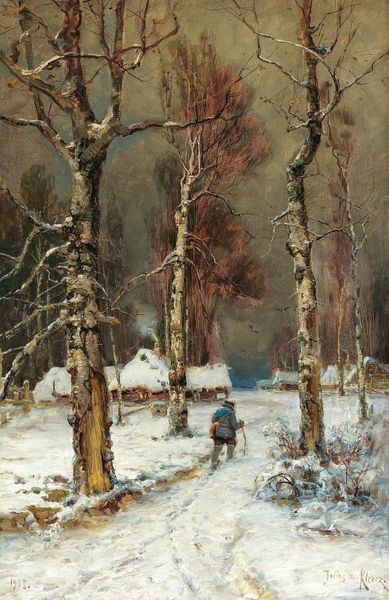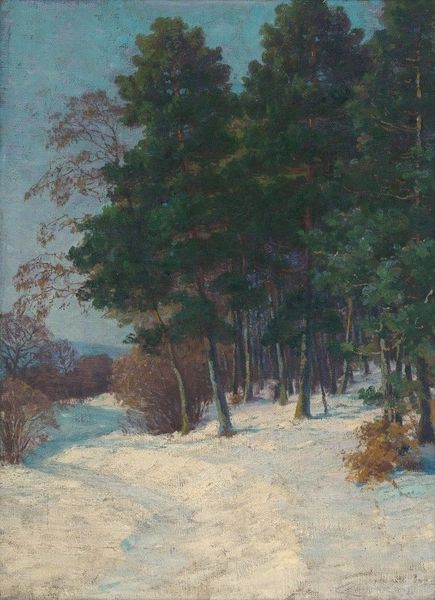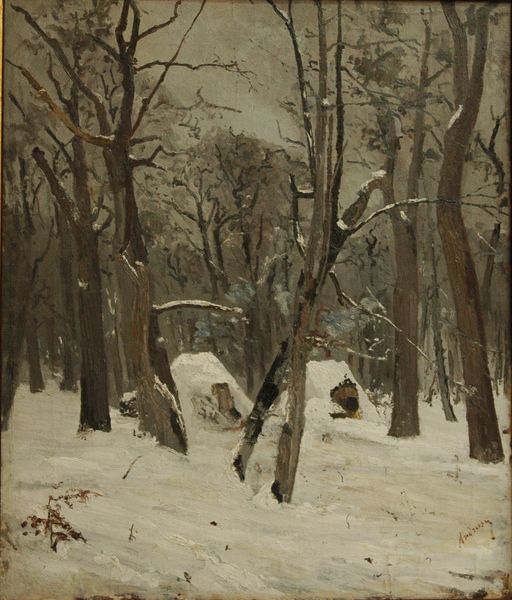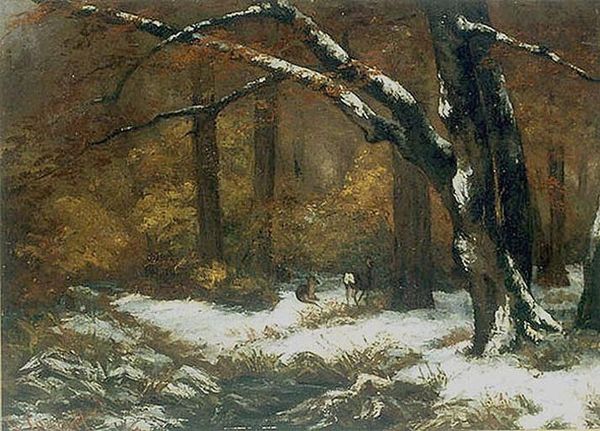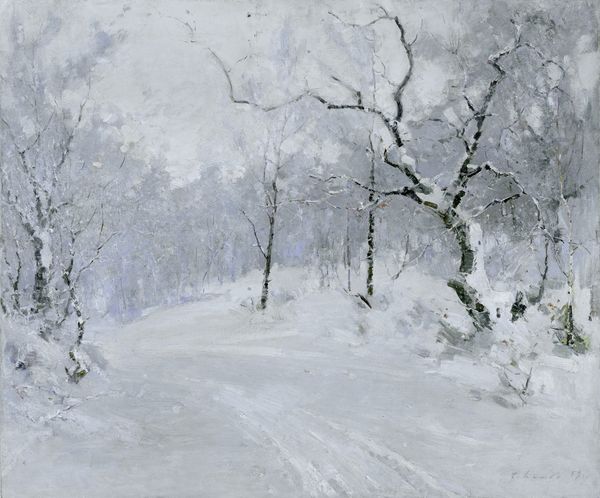
Copyright: Public Domain: Artvee
Curator: Brrr, you can almost feel the chill emanating from this canvas! I find this piece by Ladislav Mednyánszky, called "Winter Night," completed in 1888, so evocative. Editor: It is quite arresting. That deep, almost mournful indigo pervading the entire scene, broken only by glimmers of snow and moonlight, is almost suffocating. Curator: Suffocating perhaps, but consider the historical context. Mednyánszky painted extensively en plein air. His paintings offer a glimpse into the socio-political landscape of Hungary under Austro-Hungarian rule and its effect on rural populations and landscapes. This depiction of stark winter is more than aesthetic. Editor: I see your point. Yet, the symbols are potent. The tiny figure in the middle distance… alone. Its silhouette against the snow could signify resilience, or profound loneliness. It reminds me of Romantic depictions of the sublime – humankind dwarfed by nature. Curator: Indeed! Mednyánszky operated within a transitional moment – his style incorporating elements of realism, romanticism, and impressionism. The 'lonely wanderer' trope was deeply rooted in 19th-century Romanticism, speaking to an increased sense of individual alienation in rapidly industrializing societies. His works often captured fleeting moments in everyday life reflecting changing social structures. Editor: And the moonlight! The crescent shape, a sliver in the sky – historically linked with mystery, femininity, the cyclical nature of life. And that monochromatic palette further emphasizes the quiet, contemplative mood. It feels introspective, maybe even a little melancholy. It's like a visual poem. Curator: And note his use of plein-air techniques. Capturing the fleeting qualities of light, especially winter light, suggests his awareness of impressionist ideas and artistic freedoms gained by the late 19th century. It speaks to an effort to record real experience against idealized portrayals of nature. Editor: Considering those various elements… it creates such a deeply layered statement on individual struggle within natural and societal contexts. I initially only considered its mood, but appreciate its powerful imagery and place in time more fully now. Curator: Absolutely. The real power lies in understanding both visual language and historical situation. Art gives us so much when considered this way.
Comments
No comments
Be the first to comment and join the conversation on the ultimate creative platform.



